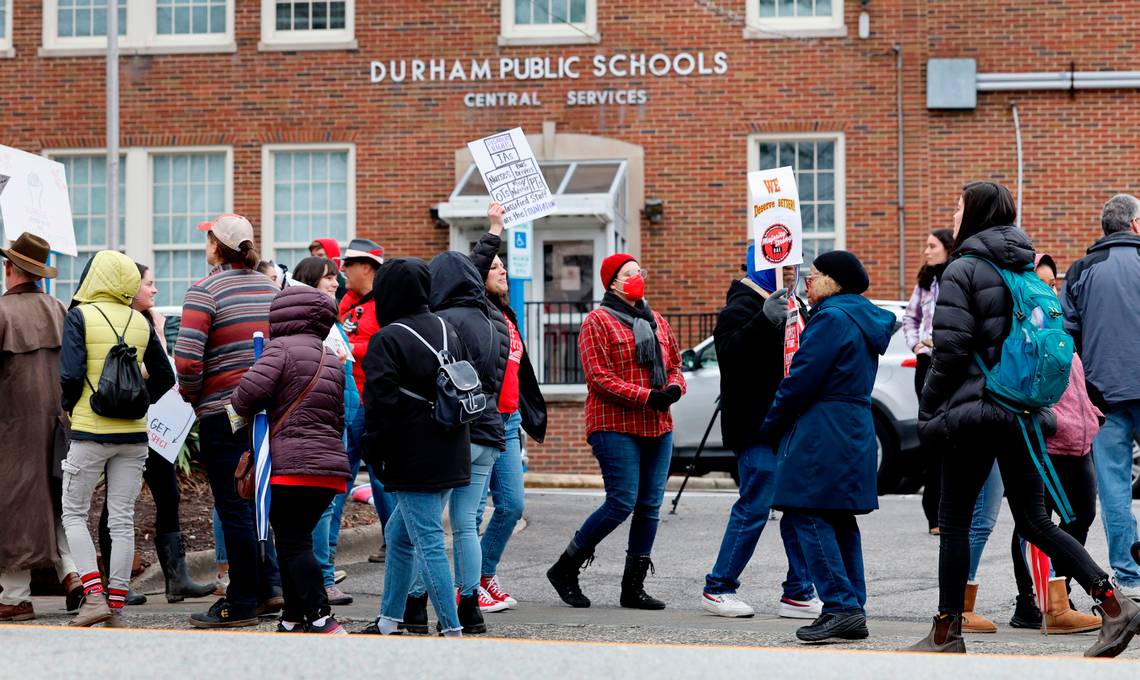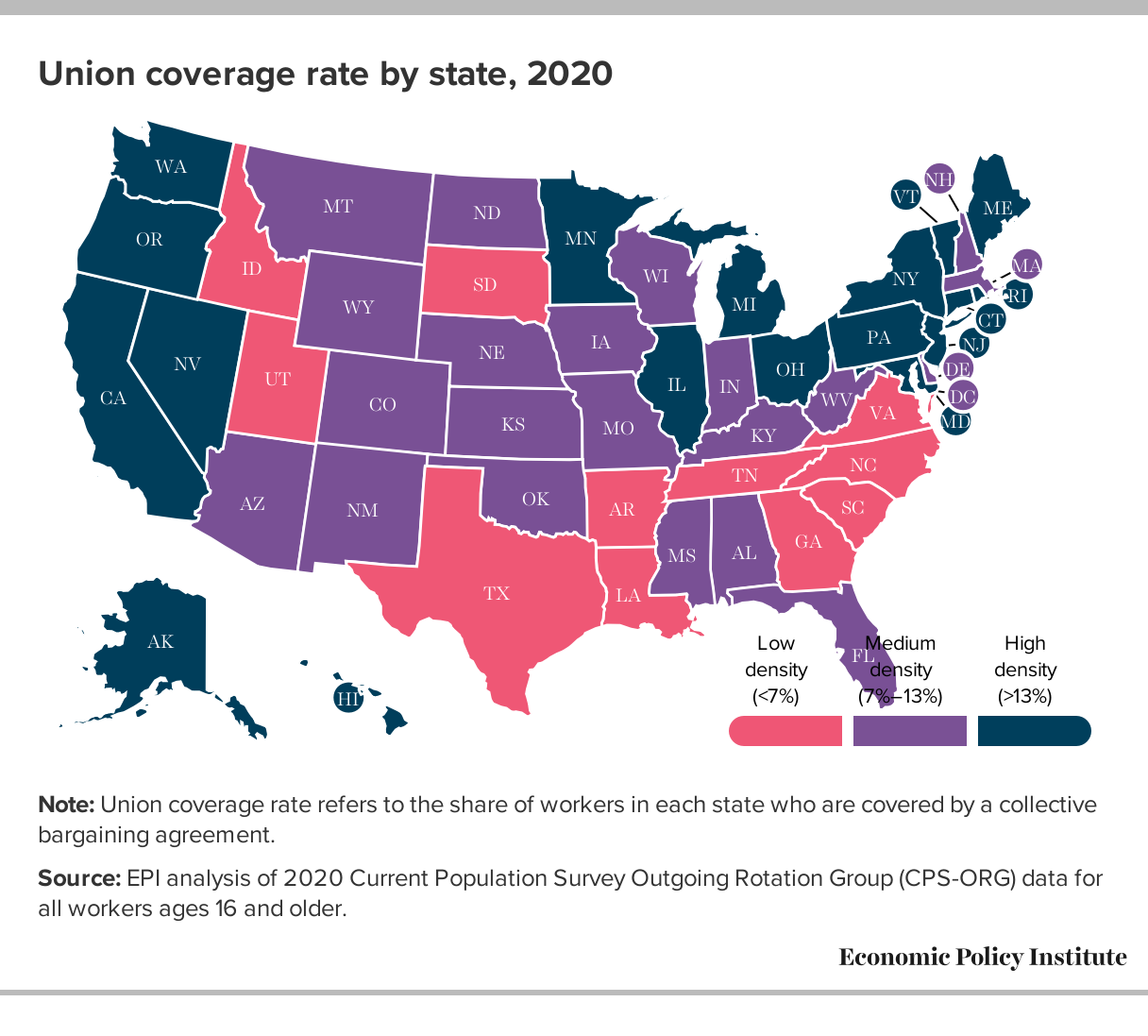
Unions exist to empower workers by advocating for equitable treatment. People should consider unionizing to ensure adequate pay and benefits, safe work environments, and meaningful voice in decision-making. Unions ensure workers can fulfill their duties without sacrificing their own well-being. In the South, sectors like education, health care, agribusiness, and manufacturing are especially well-suited for unionization, as they often involve low wages and challenging working conditions and a significant number of employees who stand to benefit from collective bargaining.

Unions Support Women and Families. Women covered by a union contract earn, on average, $203 per week more than non-unionized women, a 21.9 percent difference. In every single state, union women out-earn women in non-union jobs.1
About 1 in 10 American workers is now in a union, down from nearly one in three workers during the peak of unions in the 1950s.2

Wages in Right-to-Work (RTW) states are 3.1% lower on average than wages in non-RTW states. This amounts to $1,558 lower annual wages for a full-time worker.3
When workers are unionized, they can negotiate better wages, which spreads the economic gains more evenly and strengthens the middle class. Moreover, union membership narrows the racial wealth gap for families of color.4
• Historical Resistance to Organized Labor: The South has a long history of anti-union sentiment, dating back to the post-Civil War period. This includes opposition from business owners who feared that organized labor could empower workers, especially Black workers, and disrupt racial and economic hierarchies. The textile and agriculture industries, dominant in the early 20th century, were particularly resistant to unionization efforts.6
• Low-Wage Economic Structure and Racism: The Southern economy has long been built on low-wage industries, like agriculture, textiles, and manufacturing, which have actively resisted unionization to keep labor costs down. The region’s focus on attracting businesses with promises of low taxes, cheap labor, and fewer regulations often includes discouraging union activities.
• Race has played a significant role in preventing union solidarity in the South. Efforts to organize workers across racial lines have often been undermined by racial divisions, which were historically used to prevent collective action. Employers in the South have frequently exploited these divisions to weaken union organizing efforts, particularly during segregation and the Jim Crow era.7
• Political Climate: The South has historically had strong ties to conservative, pro-business political leaders who have opposed unionization efforts. Politicians and businesses have worked together to maintain an anti-union environment, using legislation, corporate practices, and anti-union rhetoric to limit union growth.8
• Right-to-Work Laws: Many Southern states have adopted “right-to-work” laws, which make it harder for unions to organize. These laws prohibit union membership as a condition of employment, weakening the financial stability and bargaining power of unions by allowing workers to benefit from union negotiations without paying dues.9
Collective action between unions and community groups can build awareness about the benefits of unions.
Listen to environmental justice advocate Payton M. Wilkins share why unions are well-positioned to lead the transition to clean energy and green jobs.
3. Organize for Change
Organize and mobilize a broad workers’ movement in the fight for power. Build on existing networks of local unions and worker organizations like the Southern Workers Assembly, Union of Southern Service Workers, or National Domestic Workers Alliance
4. Advocate for Policy Change
State and local governments have an opportunity to lead the way to strengthen worker voice and power. For example, they could set minimum standards for wages and benefits.10